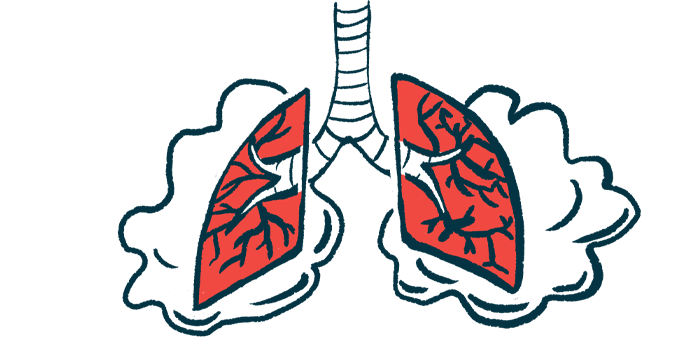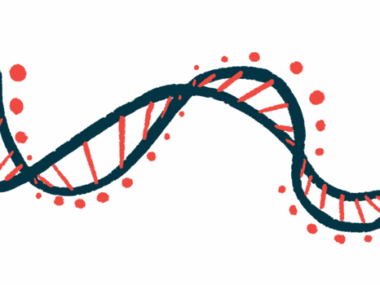Anti-SSB antibodies may predict decreased lung function in Sjögren’s
On 1 measure in patients with ILD, autoantibodies had 80% accuracy
Written by |

Anti-SSB antibodies may be a predictor of decreased lung function in people with primary Sjögren’s disease who also have interstitial lung disease (ILD), a group of conditions marked by inflammation and scarring in the lungs, according to a retrospective study from Romania.
Particularly, the presence of these autoantibodies was found to predict low diffusing capacity for carbon monoxide, or DLCO — a measure of the lungs’ ability to transfer oxygen to the blood — with nearly 80% accuracy, the researchers noted.
“Although the role of anti-SSB … antibodies as a predictive factor for ILD still requires clarification, the evidence suggesting this possibility is certainly growing,” the scientists wrote.
Their study, “The Role of Anti-SSB/La Antibodies as Predictors of Decreased Diffusing Capacity of the Lungs for Carbon Monoxide (DLCO) in Primary Sjögren Disease,” was published in the International Journal of Molecular Sciences.
Sjögren’s disease occurs when the immune system mistakenly attacks the glands that produce tears and saliva, resulting in eye and mouth dryness. The disease may also affect other organs, including the lungs, with some patients developing ILD.
However, data regarding the association of ILD with anti-SSA (Ro) and anti-SSB (La) antibodies, which are commonly found in people with Sjögren’s, are scarce.
Investigating associations with anti-SSA, anti-SSB antibodies
To learn more, researchers from institutions in Bucharest analyzed data from 26 individuals with primary Sjögren’s and signs of ILD on lung CT scans. These patients, treated at a hospital in the city, had a mean age of 51.4 years at the time of disease onset. More than 80% were women.
Most patients (65.4%) had abnormally low DLCO values and tested positive for antinuclear (ANA; 92.3%) and anti-SSA/Ro (84.6%) antibodies. About half were positive for anti-SSB/La antibodies, with 53.8% also testing positive for rheumatic factor (RF), another self-reactive antibody. Eight patients were positive for all the antibodies.
The individuals with abnormally low DLCO values were significantly older at the time of both disease onset (55.2 vs. 44.1 years) and study enrollment (61.9 vs. 50 years). These patients also most commonly tested positive for anti-SSA (100% vs. 55.6%) and anti-SSB antibodies (76.5% vs. 11.1%) than those with normal DLCO values. They also had higher levels of both anti-SSA and anti-SSB antibodies.
Our findings reinforce the role of anti-SSA … and anti-SSB … antibodies in the pulmonary manifestations of [primary Sjögren’s disease]. … Their positivity rate was significantly associated with the decrease in [diffusing capacity for carbon monoxide (DLCO)] in this research.
Further statistical analysis demonstrated that patients’ age and positivity for anti-SSA and anti-SSB antibodies were significantly associated with abnormal DLCO values. The presence of anti-SSB antibodies was found to be the strongest predictor of low DLCO, with an accuracy of 79.1%.
“Our findings reinforce the role of anti-SSA/Ro and anti-SSB/La antibodies in the pulmonary manifestations of [primary Sjögren’s disease],” the researchers wrote. “Their positivity rate was significantly associated with the decrease in DLCO in this research.”
Regarding ILD imaging patterns, more than half of the patients (57.7%) had a nonspecific pattern of inflammation and/or scarring, referred to as nonspecific interstitial pneumonitis (NSIP). This was followed by lymphocytic interstitial pneumonitis (LIP), characterized by an accumulation of lymphocytes and other immune cells, seen in 23.1%, and then by UIP, or usual interstitial pneumonia (UIP), which is marked by progressive and irreversible scarring, found for 19.2%.
Researchers call anti-SSB antibodies ‘an important predictor’
Further analyses considering only the individuals with low DLCO, with or without each imaging pattern, demonstrated that individuals with LIP were 12 times more likely to test positive for all four types of autoantibodies than those without LIP.
Individuals with UIP had significantly higher values of total lung capacity — a lung function parameter that measures the total amount of air the lungs can hold after maximum inhalation — and lower levels of anti-SSA antibodies than those without UIP.
“The presented results indicate anti-SSB/La antibodies as an important predictor of DLCO reduction and suggest a possible role in protecting against UIP development while favoring the evolution [toward] LIP,” the researchers wrote. Generally, LIP has a better prognosis than UIP.






